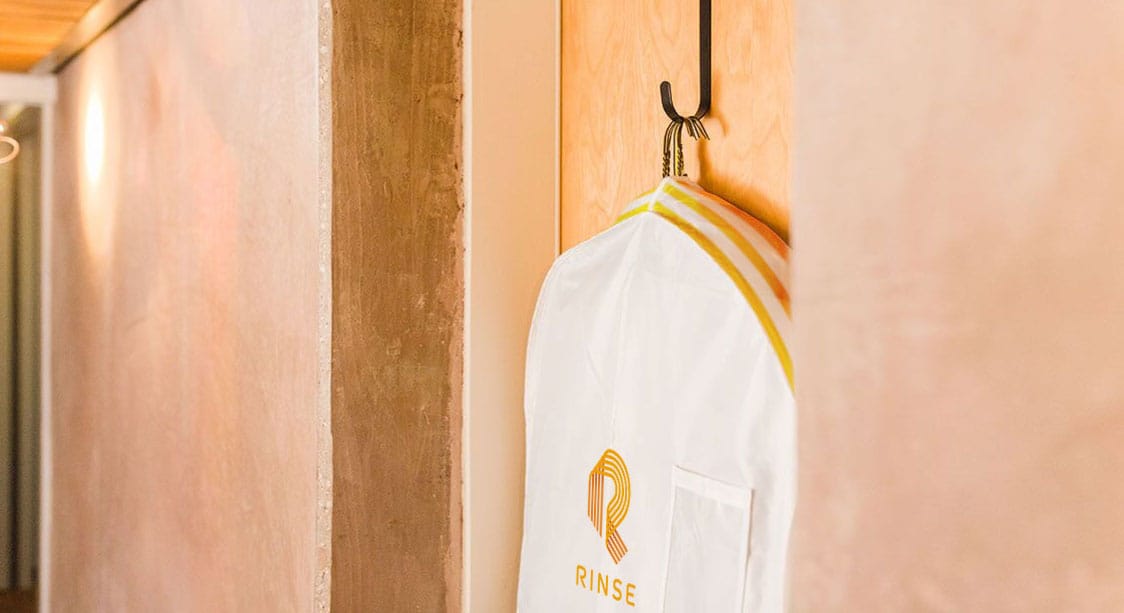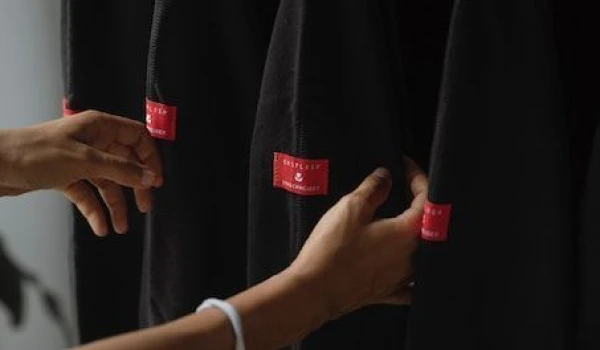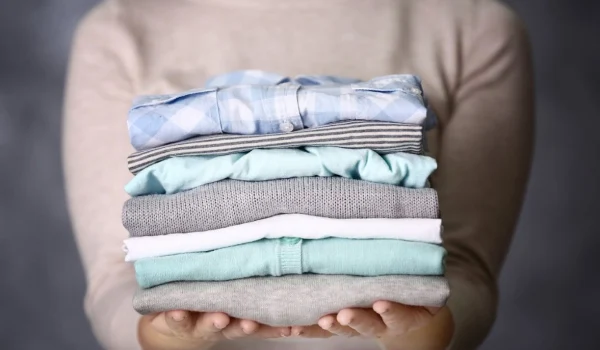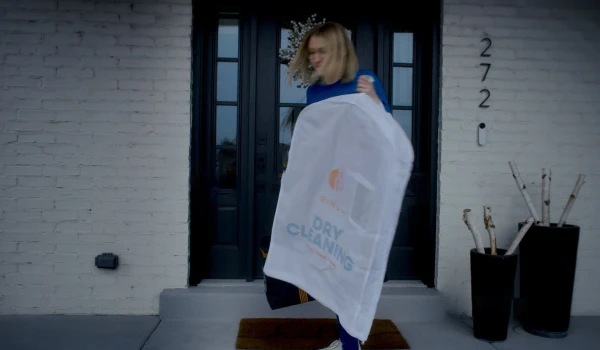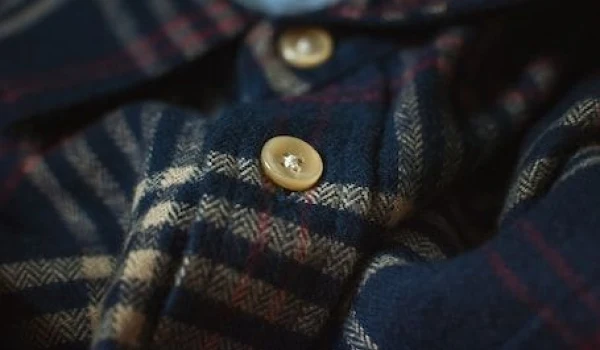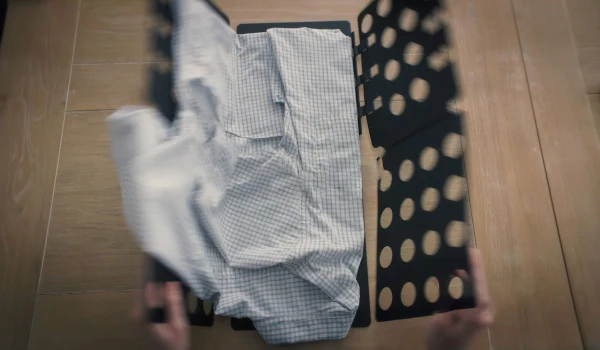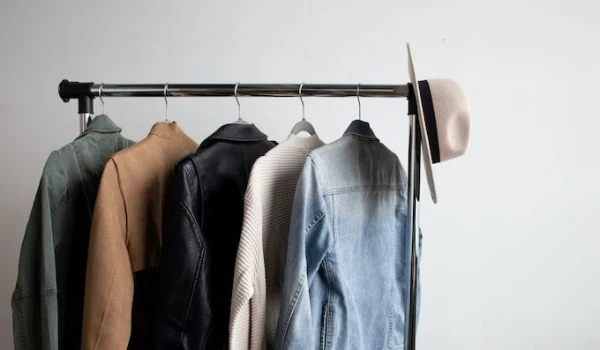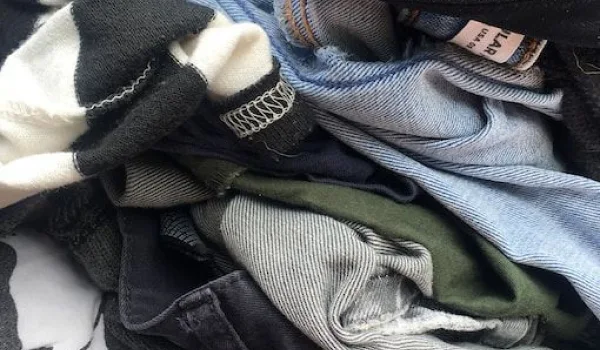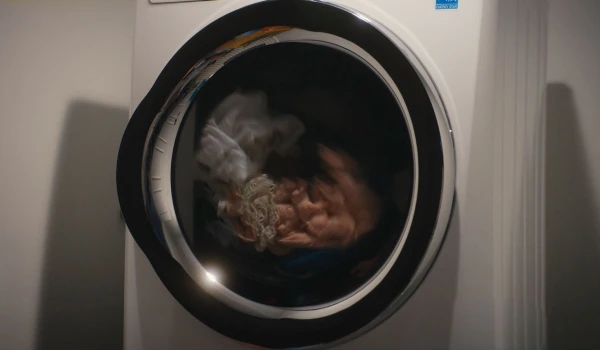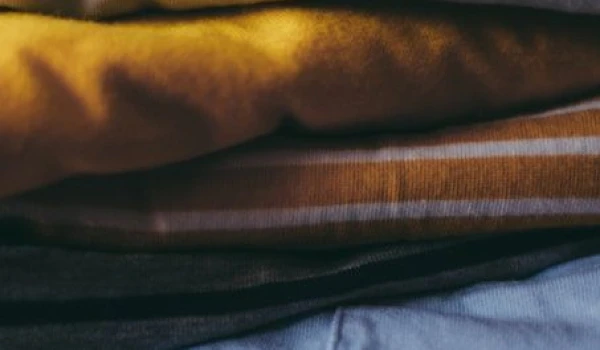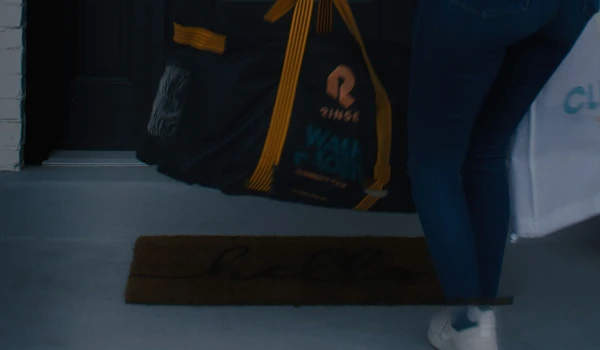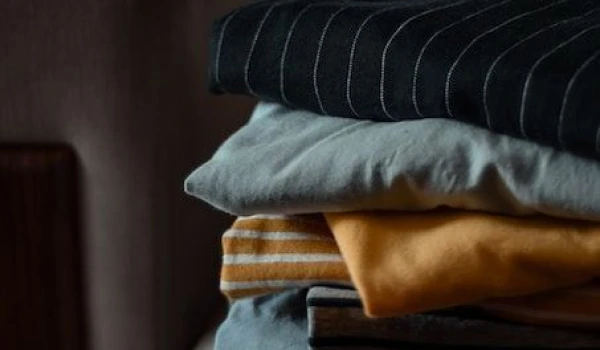Popular
Check out the most-read and most-shared posts.
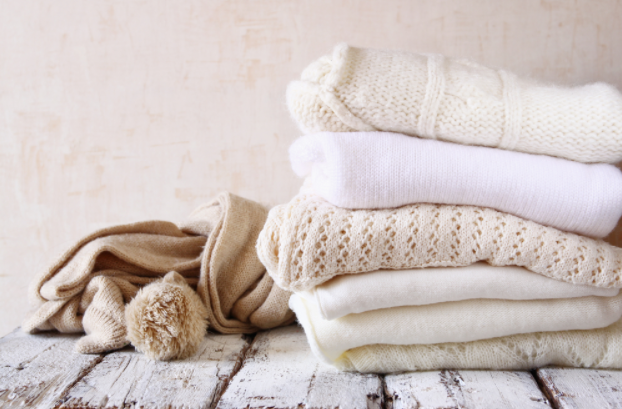
Learn what's best for cashmere items and how to care for them.
Soft, luxurious, and high maintenance—these are the first few of the things that come to mind when people think of cashmere. While this delicate fabric does require a bit of attention, don’t let that stop you from upgrading your wardrobe with a few cozy cashmere pieces. If you clean, dry, and store your cashmere properly, it’s easy to keep it in excellent shape.
Take a deep breath and let us guide you through the process—it’ll be pain-free, we promise.
Washing and drying: by hand, machine or professional
Yes, it’s possible to clean your cashmere at home. Whether you’re washing a sweater, dress or scarf by hand, these steps will help you keep your cashmere fresh.
- Fill your basin with cold water, and add a mild detergent such as Woolite, baby shampoo, or dish soap.
- Let your cashmere soak in the basin for five minutes, before rinsing thoroughly.
- Take out your clothing and fold it up into a ball to get the excess water out. Don’t wring your cashmere, which can stretch out the delicate material.
- Place your clothing flat on a towel, and roll it up to remove any remaining water.
- Lay your clothing on a drying rack. If you don’t own a drying rack, place it between two towels to dry.
Don’t have the time to wash by hand? This might surprise you, but you can use a washing machine to clean cashmere. Put the garment in a laundry or mesh bag before you place it in the machine, and select the gentle cycle on cold water. If you’d rather have a professional do the job, dry cleaning is always a good option for your cashmere.
At Rinse, our Dry Cleaning and Wash & Fold services are conveniently available 7 days a week. Visit our homepage to create your free account and schedule your first pickup. We have decades of experience cleaning cashmere!
Care tip: Ideally, you should clean cashmere after wearing it two to three times. In between washings you can remove any fabric pills with a cashmere comb or bristled garment brush. Pills don’t mean the cashmere you purchased is cheap—they’re simply a sign of friction from wear.
Stain removal: food, drinks and cosmetics

No matter how careful you try to be, you might end up with a small stain on your sweater. Your initial urge might be to panic, but you can keep your cool—and your cashmere—by following our handy stain removal advice.
- Makeup or grease-based: First blot the stain. Then, pre-treat by soaking the cashmere in mild shampoo.
- Chocolate: Dip a cloth in liquid detergent and lightly rub the stained area, taking care not to scrub too hard.
- Red wine, tea, or coffee: Gently rub the stain with a cloth dipped in a mix of cold water and dish-washing liquid. Avoid soap or machine detergents, which can set red wine stains rather than remove them.
Afterward, rinse your garment in cold water and let it dry on a rack. Your cashmere should be as good as new!
Storage: long-lasting care
To keep your cashmere looking its best, keep these tips in mind.
- Don’t hang your cashmere sweaters or dresses. A hanger will distort the shoulders, and the garment will lose its original shape.
- Instead, fold your cashmere and keep it in a drawer or on a shelf away from moisture.
- When you’re putting your cashmere away for the season, place it in a breathable garment bag or storage box in a cool, dry area. To prevent wrinkles, you can wrap each piece of cashmere clothing in acid-free tissue paper.
- Remember to make sure your cashmere is washed before you store it for the offseason. Moths are attracted to human scents, so you’ll want to get rid of any perfume or food odors prior to storage. As an added precaution, place some cedar wood moth repellents with your cashmere.
Now that you’re fully equipped to care for cashmere, go ahead and stock up on this comfy and luxurious fabric in time for sweater season. You’ll look good and feel good!
Photos: Tamarcus Brown, Ann Haritonenko / Shutterstock.com, tomertu / Shutterstock.com

Learn why some clothes are not meant to be put in the dryer.
We all have a least one article of clothing with a care label that says "Hang to Dry." Most of us have probably thought at one time or another, "do I really have to?" and weighed the risk of throwing that piece in the dryer along with the rest of the laundry.
Well, for all you who want to avoid turning your favorite pieces into doll clothes, here is a guide on why you should hang dry certain garments and how to do it properly so your clothes continue to last and look great.
Why Hang Dry?
Hanging clothes to dry helps to avoid the heat damage that can be caused by traditional dryers.
Delicate fabrics, such as those used in activewear, underwear, and jeans, can lose their shape and fit due to the harsh tumbling and heat of the dryer. By air drying your clothes on a clothesline or laying them out to dry on a flat surface, you can help your clothes maintain the same fit and form they had when you first bought them.
Benefits of Air Drying Clothes
Promotes Energy Conservation & Saves Money
What better way to reduce energy consumption than by eliminating it entirely? While this is great for the environment, your utility bill will also be significantly lower thanks to the electricity saved from not running your dryer.
Helps Remove Strong Odors
Sunlight is very effective in killing bacteria and removing odors from your clothes. This may be particularly useful for bedding or baby clothes.
Increases Physical Activity
Hanging up laundry is a great way to log in some physical activity, whether that be indoors or outside.
Fabric Preservation
Your clothes will last longer, maintain their elasticity, retain their color, and keep their shape if you keep them out of the high heat and mechanical action of a dryer. There is nothing more gentle than fresh air.
Less Static and Wrinkling
Machine-dried clothes will give clothes a static cling and more wrinkles than air-dried ones. This may result in you having to spend time ironing clothes afterwards.
Versatility
There are some clothes that are not suitable for dryers, such as delicates and linens. You can dry all your clothes in one go by hang drying.
Safety
Lint, dust, and debris can accumulate within a dryer's vent system, posing a fire hazard. Reducing or eliminating the use of dryers will keep you safe from such risks.
Peace & Quiet
Dryers tend to be loud and cause vibration, something air drying avoids.
How To Properly Hang Dry
Check the care label and wash your clothes accordingly. The clothing label will direct you on the best method, be it a machine washer or by hand with hot, warm, or cold water. If you’re unsure what those comically unintuitive care symbols mean, you can reference our handy laundry symbol guide.
Hanging your clothes outside on a clothing line? Follow these tips:
- Pants: Hang your pants upside down. Make sure to match the inner leg seams of the pants, and then place the clothespins on the hems while attaching it to the clothesline.
- Shirts and tops: Also hang these upsides down. Place the clothespins at opposite ends of the bottom hem of the shirt or top, and pin to the clothesline.
- Socks: Hang socks in pairs and upside down. Attach the clothespin to the toe area of the sock and let the top part of the sock hang down.
- Bed linens: Since sheets and blankets can take up a lot of space on the clothesline, you should fold them in half and pin each end to the clothesline.
- Underwear and bras: Hang underwear from opposite sides of the upper seams, and bras from their hook end.
Drying your garments inside? Tips to help them dry quicker and look their best:
- Make sure to lay your clothes on a flat surface when air-drying garments inside.
- Be sure to leave some room between garments to allow air to circulate between them. (A wet pile of clothes is a wet pile of clothes whether you carefully created that pile or not. The key to successful air-drying is ventilation).
- Place your clothes near a window, vent, air-conditioner, or a fan to speed up the drying process.
- Don’t have enough space to lay everything flat to dry? No problem – the key is prioritization.
- Sweaters and other garments made from heavy or stretchy material should always be laid flat to dry.
- Other types of garments like yoga pants, swimsuits, jeans, etc can be hung inside using hangers or a drying rack.
How to Get the Best Results
Start Early in the Morning
Check the weather (and pollen!) forecast and get outside early to take advantage of a full day of sunlight. This is especially important if you have heavy items that will require more time to fully dry. While it depends on the weather, it can take at least two to three hours for clothes to dry outside. Make sure you are not folding damp clothes as this may result in mold or mildew growing.
Blot Wet Towels Before Hanging
Towels are designed to absorb water. As such, they will come out of the washer very wet and take a long time to dry. To speed up the process, blot the wet towel by placing it on a dry towel before hanging it. Once excess moisture has been transferred, place both towels on the drying line.
Give Clothes a Shake
Gently shake out each garment once it comes out of the washer. This helps remove wrinkles and smooths out fabric folds.
Hang Largest Items First & Secure Them in Place
Maximize the space on your line by hanging sheets first, then towels, and then clothes. Keep at least an inch of space between pieces to ensure adequate airflow and prevent mildew growth. Use plastic hangers and clips to maintain them in place – just be gentle with delicate fabrics and avoid leaving marks or stretching.
Fold Laundry as You Remove It from the Line
Avoid wrinkles and fold your clothes as you remove them from the drying line and into a laundry bin. From there, put them away as soon as possible to ensure crisp fabrics.
Mind the Sun
White clothing and linens should sit in direct sunlight to help bleach these garments. When it comes to bright and dark fabrics, place those in a shaded area. This ensures that the dyes are not weakened and prevents fading.
8 Clothes You Should Never Put in the Dryer
Always check the label of your clothes carefully, but the below items are usually a no-go in the dryer:
- Delicate Fabrics: Silk, lace, chiffon, and cashmere can be damaged or shrink at high temperatures
- Wool: Sweaters and suits can shrink and lose their shape
- Bathing Suits: Heat and friction will damage elastic fibers, causing them to stretch
- Leather and Suede: Items can become stiff and discolored – it is better to have these items cleaned professionally
- Running shoes: Shoes can lose their shape and have the soles separate
- Lingerie with Underwire: The underwire can be bent or damaged in a dryer; bras can become stretched
- Athleisure: Similar to bathing suits, these type of clothes have special fibers that will become stretched and ruined
- Beaded clothes: The heat from the dryer can cause beads to melt or become distorted
A good rule of thumb: If your garment is made of synthetics, wool, or lace - double check the clothing label to see if it’s a hang dry items.
Overcome Hang Drying Challenges
Are you convinced that hang drying is the way to go, but just don't have the time to do it? Well look no further. At Rinse, we always follow the care label on your clothing and have your hang dry needs covered. It's just another reason why we're the most trusted brand in clothing care. Try our Hang Dry service and experience our quality cleaning and exceptional customer service for yourself!

You can easily find yourself busy at work and behind on your to do list at home. Unfortunately for most, there just isn’t enough time in the day to get everything done. However, by closely examining your current schedule and your priorities, you can start to make changes to your routine in order to free up more time in your day.
Remove or Consolidate Activities That Take Up Most of Your Time
Consider rethinking the way you approach to do’s or activities that take up a large part of your day. Some examples include: time spent on your phone or the Internet, watching TV, checking email, and completing household chores.
Social media and TV
Checking Instagram, watching Netflix, or surfing the Internet is subjective and personal in terms of the value it provides. But it’s safe to assume that most of us are guilty of vegging out from time to time. In an effort to avoid wasting time, consider cutting your Internet and entertainment time in half or eliminating certain things (such as TV) altogether. There are even helpful apps and site blockers to help you set limits and kick the habit! In addition to helping gain more hours in your day, saying sayonara to excessive social media or TV watching may even make you healthier.

Repetitive Work Tasks
It’s easy to get caught up with work-related tasks, especially email. By dedicating certain times of the day to clear your inbox and refraining from checking it on your phone every time you receive an email, you should start to notice that you are wasting less time. A good place to start? Clear your email once in the morning and once around 2pm so your colleagues have time to take action on your responses.
Chores and errands
Maintaining a clean and functional house or apartment isn’t easy. There are just some chores you cannot skip such as washing the dishes and doing your laundry. By outsourcing household chores you will easily start to find more time in your daily schedule. Luckily for you, Rinse has got your dry cleaning and laundry covered, Handy connects you with local housekeepers and Taskrabbit is there to help you with everything else. It’s up to you to decide how valuable your time is, but services like these can give you some (or a lot) of it back if you’re willing to pay for some help!
Start Using Your Spare Time More Wisely
When you start to breakdown your day you’ll begin to notice periods of time that are not being utilized properly. We suggest thinking of ways to fill your downtime with more important things you may not have time for right now. Some of our suggestions include reading, learning, creating.
Instead of scrolling through your newsfeeds keep a book (or Kindle book) with you at all times. Rather than reaching for your phone to kill time try and sneak in some reading time here and there.
During your daily commute start listening to an audiobook or podcast. It’s a great way to learn something new or enjoy a form of entertainment without having to sacrifice anything else on schedule. Fill otherwise useless time with something constructive.
Making fundamental changes to your schedule and lifestyle will not be easy but if you’re serious about getting an extra 2 hours back in your day we highly suggest examining ways you can change.
By far the easiest way to get started is by outsourcing smaller tasks such as laundry or house cleaning. Alleviating these tasks from your to do list will accumulate and you’ll start to notice the difference rather quickly. In order to sustain the change, you’ll need to be disciplined in creating consistency and evaluate making bigger changes to your schedule such as waking up earlier, cutting back on or eliminating non-essential forms of entertainment, and being proactive rather than reactive.
Readers Also Liked:

We've all been there. You're getting ready to head out for a night on the town with friends when you spill your wine on your perfectly coordinated outfit. At this point, there's no going back; there's no way you have enough time to pull together another outfit as good as the one you've already spent an hour analyzing in the mirror.
Left with no option, you implement the 5 minute make-shift stain removal process: Add water, rub, then use a blow dryer or any other air-blowing device to dry the spill zone just in time to run out the door. As it turns out, these are some of the worst things you can do if you have any intention of wearing that outfit outside of the dim and forgiving lights of the bar-scene.
Luckily enough for the spill-prone among us, Rinse's co-founder, James Joun, grew up in the Dry Cleaning business and has laid out 6 Do's and Don'ts in case you spill your favorite wine on your clothes.
1. Blot. Don’t rub.
Blotting the spill zone is an essential first step to treating your wine stain. While the immediate reaction may always be to rub the stain, James points out that it’s important NOT to do so since it can actually cause the stain to spread and permanently damage or alter delicate fabrics.
2. Water is your ally
Since wine is a water-soluble stain, a good thing to do is to use room-temperature water to tackle the spill zone. James suggests using a wet cloth and blotting around the edge of the stain first to prevent further spreading.
3. Don’t wait
While it can be hard to face the reality that you just stained your favorite white top, crying over spilled wine can actually make it worse. The longer you wait to treat the stain the harder it becomes to remove since it can get deeply embedded into the fibers of the garment.
4. Step away from the blow dryer
It turns out that using your blow dryer or heater on the stain can do more harm than good. For the best chance of restoring your garment, keep it away from sunlight and heat since both can accelerate the setting of the stain.
5. Don’t try to be a super-hero
Given the unpredictable nature of garment materials and dye strength, using a home-brewed solution for the wine stain can be a hit or miss experience. Unless you’re 100% positive that a household soap has a neutral pH, it can react unpredictably to the stain and garment.
6. When all else fails, leave it to the experts
While the steps above are great for preventing the stain from worsening, your best chance at restoring the garment would be to leave it to clothing care specialists. At Rinse, we always examine and apply best practices for removing stains and maintaining the integrity of the garment.
To learn more and schedule a Rinse, visit rinse.com.
Just like any other industry, clothing care is not immune to the politics of dress. Gender still plays a subtle role in the cost of treating each garment, and women usually end up paying more—a practice widely referred to as "pink tax." Just as a pink razor will often cost more than a blue one, women's button down shirts cost more to be cleaned at the dry cleaners than men's button down shirts.
But why does this happen? And, more importantly, will it ever change? We take a look at the reality of gender bias in the clothing care industry and how consumers can use their purchasing patterns to make a difference.
Gender bias: It's not what it seems

In contrast to its application to many consumer products, gender bias in the dry cleaning business is not an intentional creation (at least, not directly). While products such as razors and shampoo are intentionally marketed to women at inflated prices (though they are nearly identical to their male-focused counterparts), it's actually the infrastructure surrounding dry cleaning practices that has informed the disparate pricing model.
The machines that dry cleaners use to press button down shirts are sized to fit men's shirts, and since women's shirts tend to be smaller than men’s and cannot fit onto the machine, they need to be hand-pressed. Most dry cleaners have not invested in a machine customized for women’s shirts because they're very expensive, and men tend to dry clean shirts more often than women.
In short, women's shirts actually cost more to clean, hence the higher price tag. In fact, dry cleaners who charge the same for men's and women's button down shirts may actually operate at a loss to provide this service.
Beyond the button down

When thinking about gender bias in clothing care, it's important to note the difference between a button down shirt and a blouse. Most cleaners will charge more for the latter, and rightfully so, as it's a different type of clothing that requires a more delicate touch. Blouses tend to be more intricate and must be pressed by hand to avoid damage to any details, embellishments or delicate materials such as silk or lace. On the other hand, button down shirts have a flat front that can easily be pressed by a machine (as long as they fit).
But beyond the button down, gender-based pricing can also extend to other garments such as dress pants or even casual wear like denim. Although no federal law has been passed, some states—namely New York, Florida and California—have acted locally by prohibiting gender pricing in some industries. Until more states follow suit, the fairest companies will consider changing their policies to charge the same price for similar pieces.
A call to consumers

Consumers sometimes underestimate their role in creating real change within any given industry. Savvy customers research and choose smart companies that do their part to deal with discrepancies such as these. If companies see that their customers are demanding standardized price points for similar items, they'll be motivated to address the issue of gender bias in clothing care.
The notion of "voting with your wallet" (making sure that your purchasing patterns are aligned with your values) is often associated with consumers' retail purchasing decisions. Should they spend the extra money to ensure every component of what they're buying is ethically sourced and created? More importantly, will this process actually change anything? The short answers to these questions: yes, and, we hope so.
This concept is just as important, maybe even more so, in service industries that see issues of inequality. Thankfully, some companies are making this an easy fix for consumers by providing services at the same cost.
While companies may have to operate at a loss if they charge the same price for men's and women's button down shirts, for responsible businesses, the issue of gendered pricing goes beyond the bottom line. Luckily for the consumer, it doesn't always have to.
Photos: WorldWide / Shutterstock.com, Olu Eletu, Benjamin Child, Samuel Zeller
Topics
Rinse Drop
We offer pickup and delivery if you can’t be present between 8pm and 10pm.
Our Valet will pick up or deliver your order to your doorstep or concierge, at which point you’ll receive a text with a photo showing where your items were left.
You can enable Rinse Drop on any (or all) of your orders.

